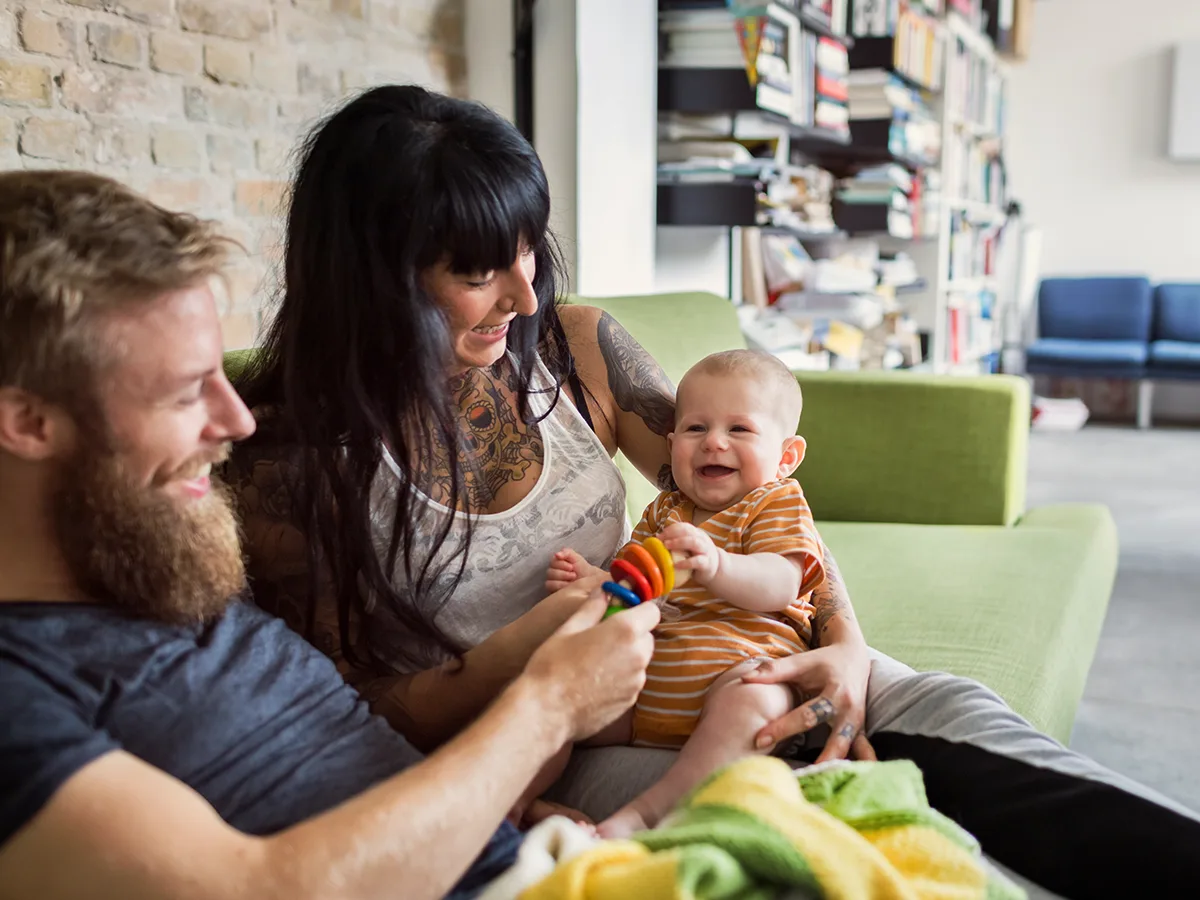Developmental milestones from birth to age 1

At a glance
Babies gain many new skills in the first year.
They reach different milestones every few months.
Some infants have delays in their development.
Babies gain skills quickly during the first year. They develop new ways to think, communicate, and solve problems. (These are called cognitive skills.) And they develop physically and learn to interact with people.
You may not be sure what skills are typical for infants. The Centers for Disease Control and Prevention (CDC) has a list of milestones, which it updated with many changes in 2022. The CDC moved some of the milestones to different age ranges, which some experts question.
The CDC milestones below can help you know what to expect at 2 months, 4 months, 6 months, 9 months, and 12 months.
If your child isn’t meeting these milestones, it can point to possible developmental delays. Be sure to talk to your child’s health care provider if you have concerns.
You can also learn more about:
By 2 months
Social/emotional milestones
Smiles when spoken to or smiled at
Becomes calm when spoken to or held
Looks at people’s faces
Seems happy when approached by a familiar person
Language/communication milestones
Makes sounds other than crying
Reacts to loud sounds
Movement/physical development milestones
Holds head up when lying on tummy
Moves both arms and legs
Opens hands briefly
Cognitive milestones (learning, thinking, problem-solving)
Can focus on and track faces and objects as they move from side to side
Watches people as they move
Looks at a toy for several seconds
By 4 months
Social/emotional milestones
Smiles spontaneously
Chuckles or giggles when you try to make them laugh
Looks at you, moves, or makes sounds to get or keep your attention
Language/communication milestones
Makes sounds like “ooh” and “aah” (cooing)
Makes sounds in response to someone talking to them
Turns head toward the sound of your voice
Movement/physical development milestones
Reaches for and grabs objects
May be able to roll from tummy to back
Holds head up without support when held
Holds a toy when you put it in their hand
Uses arm to swing at a toy or other object
Props up on elbows or forearms when lying on their tummy
Cognitive milestones (learning, thinking, problem-solving)
Explores things by putting them in mouth
If hungry, opens mouth when they see breast or bottle
Looks at hands with interest
By 6 months
Social/emotional milestones
Recognizes familiar people
Enjoys looking in the mirror
Laughs
Language/communication milestones
Takes turns making sounds with you
Blows “raspberries” (sticks tongue out and blows)
Makes squealing noises
Cognitive milestones (learning, thinking, problem-solving)
Puts things in mouth to explore them
Reaches for toys
Closes mouth to show that they’re finished eating
Movement/physical development milestones
Rolls from back to tummy and tummy to back
Sits with support
Does straight-armed “push-ups” with palms on the floor
Leans on hands for support when sitting
By 9 months
Social/emotional milestones
Begins having stranger anxiety
May be upset when separated from caregivers
Makes several facial expressions, like happy, sad, angry, and surprised
Turns when name is called
Smiles or laughs when playing “peekaboo”
Language/communication milestones
Lifts arms to ask for parent to pick them up
Makes a lot of different sounds like “mamamama” and “bababa”
Cognitive milestones (learning, thinking, problem-solving)
Looks for objects that leave their sight
Enjoys interactive games like “peekaboo” and “so big”
Bangs two objects together
Physical milestones
Gets into a sitting position without help
Moves things from one hand to the other
Uses fingers to “rake” food closer
Sits without support
By 12 months
Social/emotional milestones
Plays games with you, like patty-cake
Enjoys being read to and looking at picture books
Cries when you leave the room
Language milestones
Waves “bye-bye”
Calls parent “Mama,” “Dada,” or another name
Understands “no” (pauses or stops when you say it)
Cognitive milestones (learning, thinking, problem-solving)
Looks for things they see you hide (such as a toy under a blanket)
Puts things into a container, like a block in a cup
Movement/physical development milestones
Walks holding on to furniture (“cruising”)
Can pull themself up to a standing position
Drinks from a cup without a lid while someone else holds it
Uses thumb and pointer finger to pick things up
Keep in mind that babies develop at different rates. If your baby isn’t reaching some of these milestones, don’t panic. But be sure to bring it up with your child’s health care provider. You can talk together about whether it’s a good idea to have an early intervention evaluation.
And take a look forward at developmental milestones for 1-year-olds and 2-year-olds.
Key takeaways
Infants develop quickly in the first year, and at different rates.
Most can say “Mama” and “Dada” and understand "no” by the end of their first year.
If you have concerns, talk to your baby’s health care provider about what you’re seeing.

